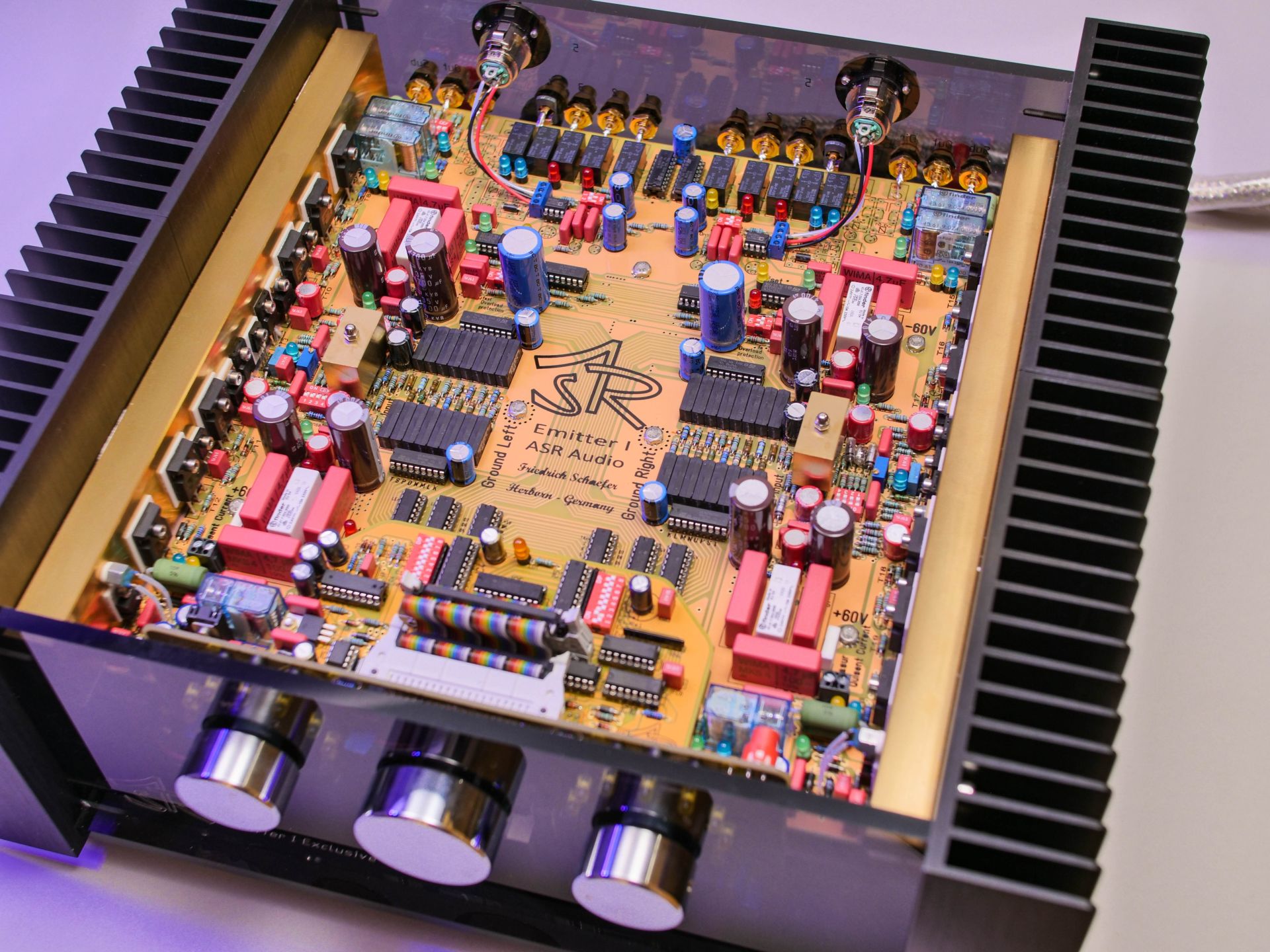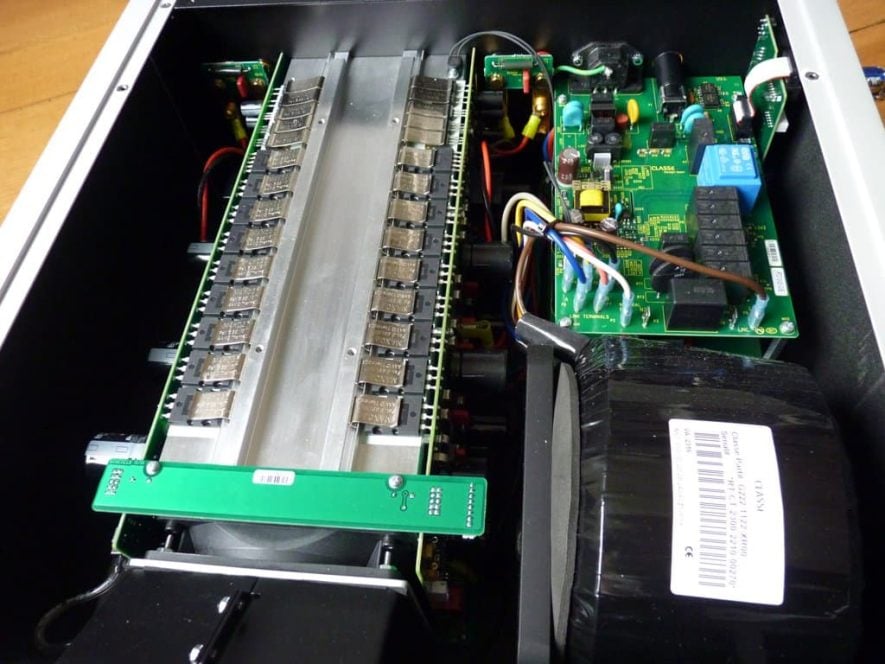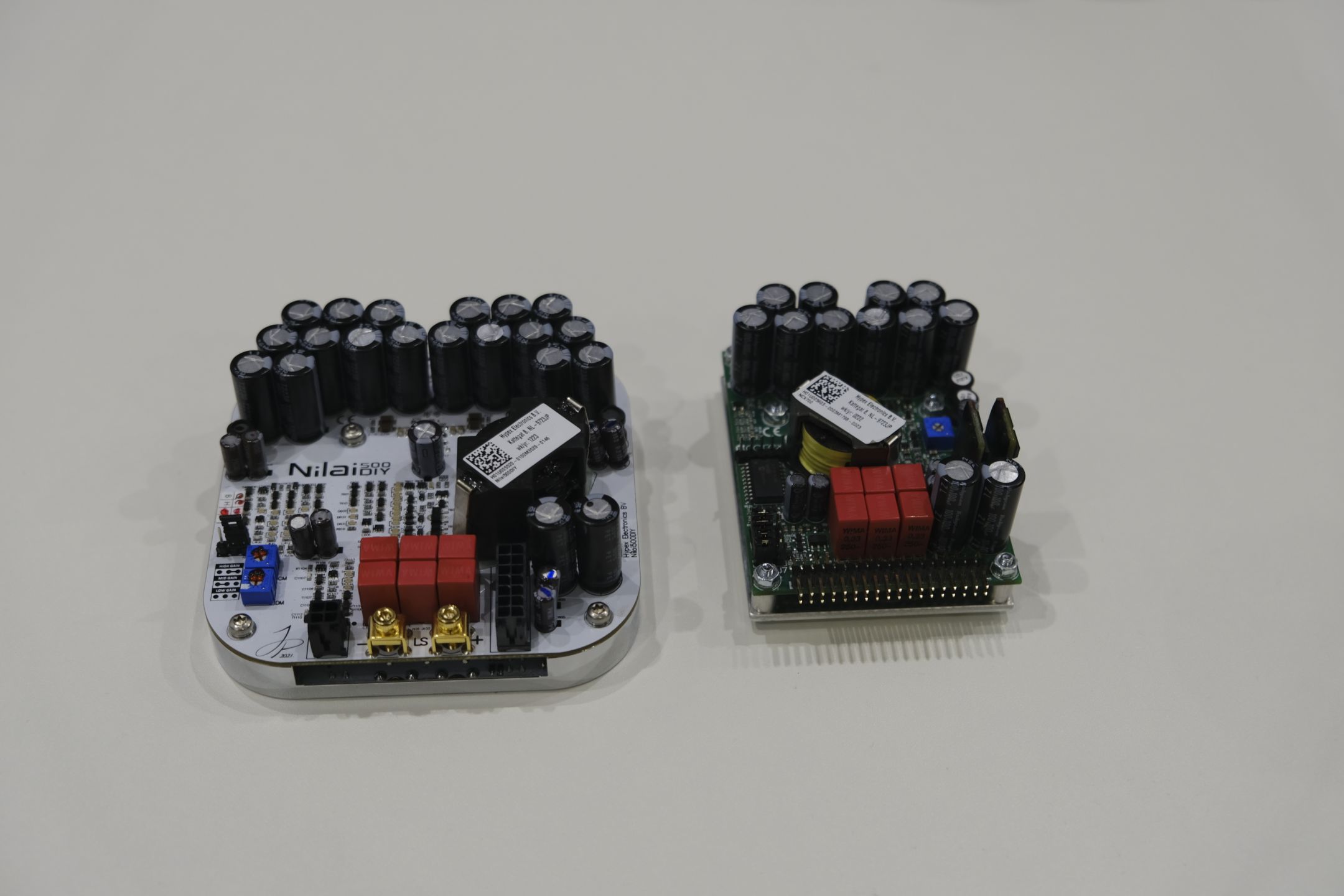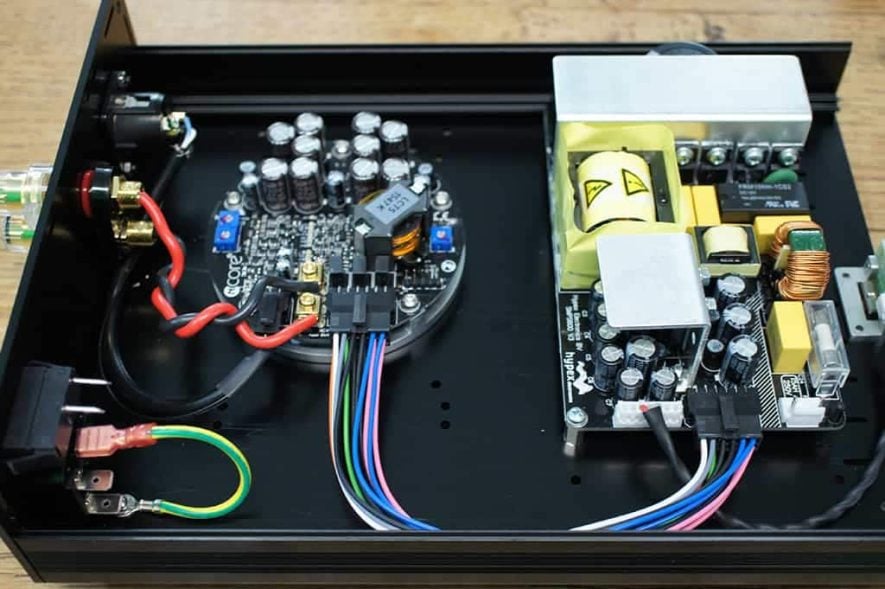

Most questions on Alpha Audio are about speakers and amplifiers. Both about combining the two and about the type of speaker and the type of amplifier that would be good or bad. We have already written about speakers, including the various types of speakers. Now it is time to discuss the various types of amplifiers.
Class A, AB and D

Now let’s be very clear: there are numerous types of amplifiers. In this article, we’ll go into the three most commonly used ones. And those are class A, AB and D. Yes: there are pure class B and even class C and T amps, but they are very rare. And thus it’s not very useful to go into explaining that.
Roughly speaking, there are two types of power amplifiers: linear and switching models. Linear designs are class A and AB (and B and C). Class D we think of as a switching power amplifier. It is not a Digital amplifier … those exist, but are not only rare; they are disappearing.
In a linear amplifier, the transistor follows the input signal. This can be 180 degrees (50% of the input) or 360 degrees (100% of the input). This depends on the type of transistor and how it is deployed. A MOSFET or tube can continue to amplify throughout the entire sine wave to give just one example.
With a switching amplifier – PWM: pulse width modulation – the incoming sine wave is basically chopped up and sent to the speaker as pulses. This is done at lightning speed in modern amplifiers. The carrier wave is usually 500 KHz or even higher.
Top and bottom

The basics are in place. So there are linear amplifiers and switching models. A linear amplifier can be thought of as a traditional amplifier based on transistors or tubes. We won’t go into the type of transistor and tube. Maybe in another article we will explain the differences.
In most transistor amplifiers, there is a transistor for the top of the sine wave and a transistor for the bottom. In other words, they follow for 180 degrees. We also call this push-pull amplifiers. This can also be used with tubes.
With Class A, the transistors – or tubes – are always fully open. If no music is running, the energy that is generated, will be transfered into heat. So while the sound of class A is often very smooth and pleasant, it is incredibly inefficient. Think of it as a river pushing against a waterwheel, but the waterwheel is stuck: the water just keeps running and all the energy is lost. What a waste!
With class AB, a different approach was taken. Again, in these amplifiers there is a transistor for the top and bottom of the sine wave, but the transistors are off when they have nothing to do. However, this does present a problem: crossover distortion can occur at the crossing point: namely, the transistor has to “turn on”, and that takes some time, causing distortion at the crossing point. They also call this zero-crossing distortion.
To solve that, a manufacturer can opt for a “bias”. Simply put, the transistor has been turned on, just a tiny bit. This prevents a hard switching moment between the two transistors and thus prevents crossover distortion. How high the bias is set varies by manufacturer, model, etc. The first five watts is a good starting point, since you will be playing in class A most of the time. The amplifier will then consume a bit more at idle, though.
Feedback

This is an extremely controversial issue within amplifiers: feedback. Or better: negative feedback. This is a technique for bringing down distortion and also for increasing the amplifier’s control and bandwidth. In other words, negative feedback potentially improves an amplifier’s performance and makes it more compatible with a wide range of speakers.
Feedback involves injecting the signal from the output into the input. Exactly how this is done varies by manufacturer. They all have the tricks and their own ideas and solutions to this. So it is not that useful to elaborate on that.
One amplifier that has applied it in a very particular way and that we’d like to mention here is the Benchmark AHB2, which applies both feedback and feed-forward in its design.
The outcome of feedback – if done properly – is more stability, better response, more bandwidth and lower distortion. It does come at the expense of some gain. But we cannot say that’s a huge issue.
However, many enthusiasts feel that feedback makes an amplifier sound more dry and a bit dull and that it makes the stereo image smaller in some cases … remarkable, considering the literature. Yet we must acknowledge that this is sometimes the case. And the fact is: we can tell in measurements which manufacturers use much or little feedback: the noise floor is usually a lot quieter in amplifiers that apply a lot of negative feedback. So it does measure better than an amplifier with no feedback…
Switch it on!


Once again, a very controversial topic: class D. After all: this “digital” amplifier sounds flat, cold and harsh. Right?
No! First of all, class D is not digital. It is simply an analog amplifier, however, the underlying technology is different. Namely PWM: Pulse Width Modulation. In fact, a class D amplifier switches the power supply based on the music signal. So there is “sampling” and based on that, the amplifier sends out PWM pulses. How fast a class D samples and switches depends on the manufacturer. Usually we can say that faster is better. Hypex is around 500 KHz. Texas Instruments has a model that operates even at one GHz.
The confusion with digital will mainly come from the name: class D. D=digital…. However: is only class A then an Analog amp? Then what about B? And C? and T? Exactly: it doesn’t work like that.
Still, class D does require ‘sampling’, and those ‘samples’ are used to switch the power supply. And that basically goes with on or off. Only the duration of on and off is adjusted. But is it then a digital amp? No.
Filter

Now there is a high-frequency switching frequency in the signal. We have to get rid of that. As well as some other “junk. In short: there is always some form of filtering in a Class D amp. Previously, that filter was applied in the output stage. And that made the class-D amplifiers very notorious: because of that filter, the frequency response was dependent on the impedance of the speaker. And that sometimes gave rather crazy results.
This problem has now been solved. Also, the bandwidth is getting better and better. The new generations – think Hypex Nilai and Purifi Eigentakt – have bandwidths up to 60 kHz. This is more than enough for the majority of users.
Tight!
Now class D amplifiers usually measure extremely well when it comes to noise floor and distortion. Virtually always better than class A and AB. And yet many enthusiasts find them not as musical as a traditional transistor. Is a class D too tight and “clean”? Or is there something else going on? We are still trying to figure out what is happening.
Rounding off
We hope you now know a little more about the various amplifier technologies. And where the biggest differences are.
We would like to add that there are mainly bad and good amplifiers. The class actually says very little about the characteristics. A Class A can sound very cold. A Class AB can also sound rough due to a bad bias. And a Class D can play very fluid and soft, because the implementation is well done.
So do not stare at the specsheet of an amplifier. Believe your ears and, above all, make sure it is a good combination with your speaker.










Hallo beste audiofielen
Ik heb aandachtig dit verhaal over versterker soorten gelezen .
Heb zins kort mijn klasse A technics versterker (1984) vervangen door een NAD 368 klasse D versterker .
En ja wat een verschil , maar wel erg wennen aan het droge geluid .
Nou had ik ook gelijk mijn Tannoy Venus V30(ook 1984) vervangen voor een set Dali ikon 6 speakers ..ja klonk goed .
Maar erg droog ,dus nu de tannoys weer geplaatst …dat is de trick …wat een geluid !!zoveel meer ruimte .
Dus de speaker versterker combi maakt toch wel heel veel uit , en zou kunnen liggen aan de feedback zoals genoemd .
I concur with others: your article is easy-to-digest, informative and I will add timely. I actually understood it. Scary. But two questions: Firstly, regarding the D issue with high-frequency signal noise, you say “ This problem has now been solved.” Can you talk a bit about how and what the results have been? And secondly, the BASH topology seems to be a solution gaining traction? I see it for example in the Elac ARB51. Can you go into detail on that in a future piece? Advantages, disadvantages, impact on sound quality, yada yada. Thanks Jaap.